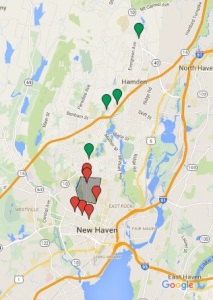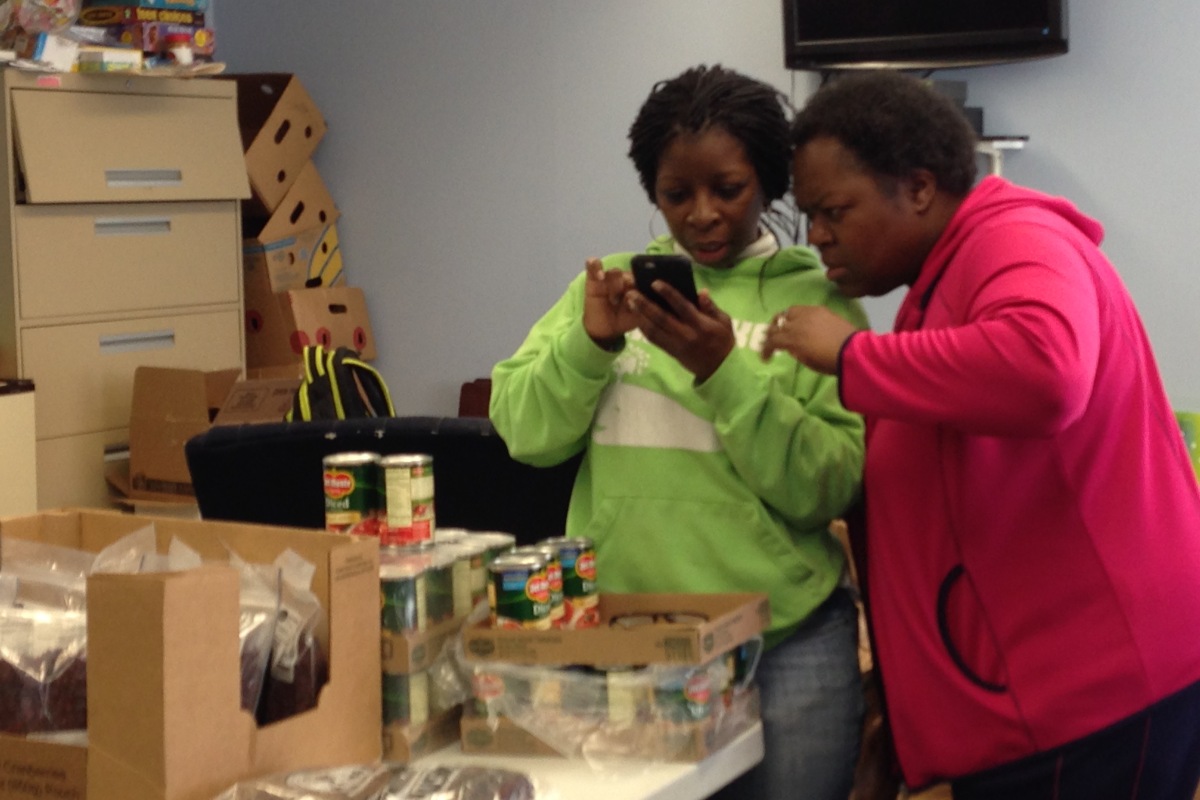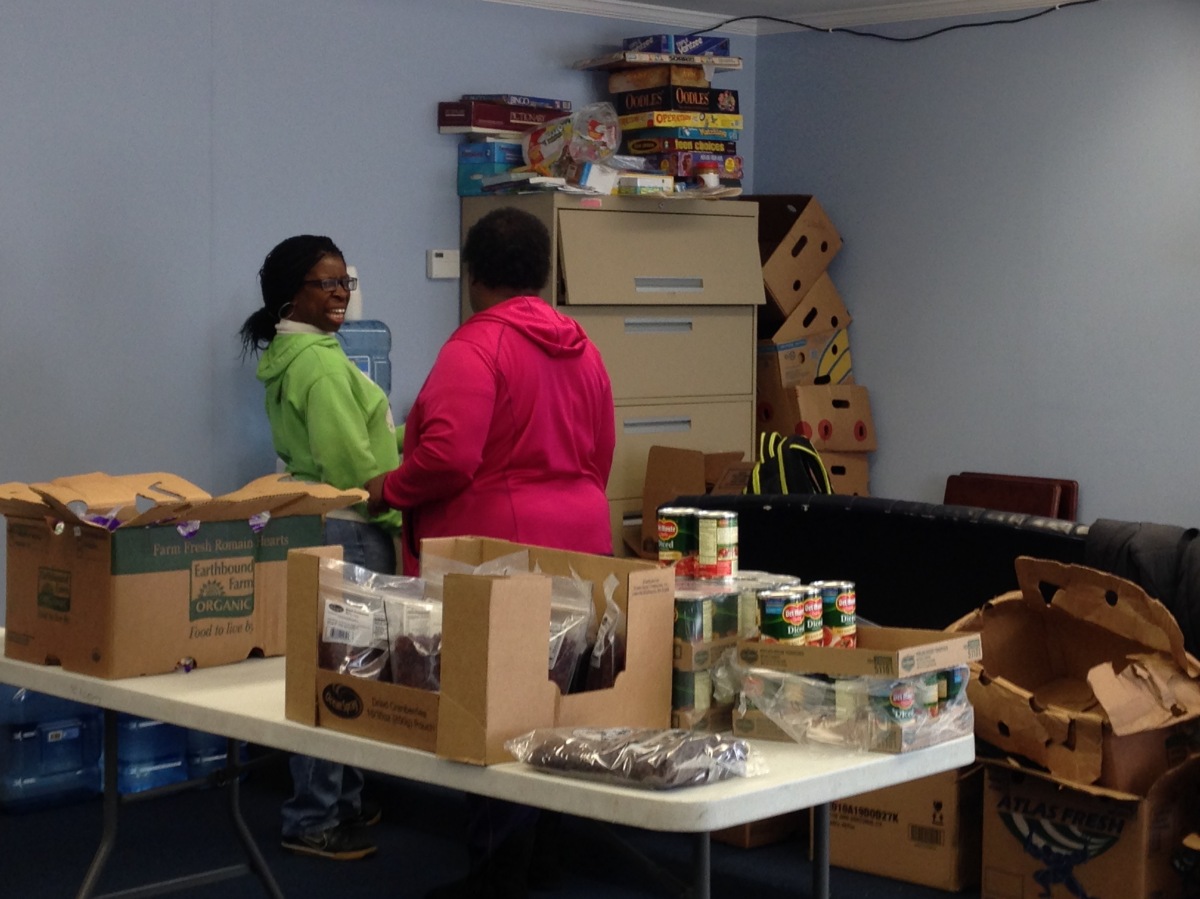By Nick Solari
Pastor Lubin Beaucejour used to sit at his desk overlooking Interstate 91 and watch the cars fly by.
Beaucejour – an employee of Blue Cross Blue Shield in North Haven at the time – noticed that everybody seemed to be in a rush to get somewhere. Born and raised in Haiti, he marveled at the way Americans were always “on the go.”
 “Watching the people drive by, I used to sit in my office looking out the window and just think, ‘what a country,’” Beaucejour said. “When I came to this country, and I saw the wealth of America, I remembered what I left behind. I saw the America that was spoiled. I used to just think ‘no, this can’t be possible.’”
“Watching the people drive by, I used to sit in my office looking out the window and just think, ‘what a country,’” Beaucejour said. “When I came to this country, and I saw the wealth of America, I remembered what I left behind. I saw the America that was spoiled. I used to just think ‘no, this can’t be possible.’”
He remembered what living in Haiti was like. He knew that things had gotten worse since the earthquake that devastated the country in 2010. People had no food, no water, no housing, no clothes.
“You have to go there to even comprehend the level of poverty,” Beaucejour said. “People say we have poverty in New Haven, and that we have poverty in Hartford and Waterbury… But what they don’t realize is that it’s much different.”
One of the biggest differences, Beaucejour said, was that Haiti had no “safety nets.”
“Haiti has no welfare, no soup kitchens, no Salvation Army. You might think it’s bad here, but it’s much worse there.”
He was “inspired to actually find a way to be the bridge that brings America to Haiti, and to be a blessing to the Haitian people.”
Beaucejour, currently a pastor at Christ Community Church in Wallingford, began organizing his first voyage back to his homeland in 2000. He created the Bethesda Evangelical Mission (BEM), a nonprofit organization that planned mission trips to Haiti’s southern peninsula.
BEM then became a branch of GO-ICS (Global Outreach International Center for Services), which Beaucejour created to “meet the medical challenges of the people of the southern peninsula,” according to the organization’s website, www.timetogonow.org.
The goal was simple: to provide access to health care throughout the region.
So Beaucejour began recruiting people to make trips to Haiti with him. At first, the organization would collect medication and health care supplies. They would go for a week, and hold open clinics in different villages where people could wait in line to receive care.
Sixteen years later, BEM still follows the same routine. Kathy Clements, a retired nurse, has been making two trips a year with Beaucejour and BEM since 2010.
Clements’ mother passed away on Jan. 12, 2010 – that day the earthquake in Haiti occurred. Clements was having a hard time dealing with her mother’s death, which is when her friend, Abby Bruce, suggested she take the trip to Haiti.
“I’m going to Haiti with my daughter,” Bruce, also a registered nurse, said. “You should come with us.”
“I found a way to give back in my mother’s memory,” Clements said. “I’ve gone back twice a year since, and I don’t regret a single moment of it.”
Bruce, who sponsors four children in Haiti, and Clements have been a part of BEM’s trip in February and August each year.
“There’s a group of us that have been doing this since 2010,” Bruce explained. “You develop relationships with the people you go with, so they become like family.”
Beaucejour says he is forever indebted to the people who have helped him with his project.
“It shows the heart that they have,” Beaucejour said. “For them, to give up their luxury to go help, it’s just a selfless action. They are the engine that makes this program run.”
BEM’s people stay in Beaucejour’s brother’s mission house when they travel to Haiti. Each day is the same: They wake up at 6 a.m., pray at 7, eat breakfast at 8 and then they’re out to door and on their way to a different village.
By the time they arrive there are hundreds of people waiting in line to be seen. The team sets up tables and chairs in a tent at the front to check people in. Younger children, who go on the trip but aren’t medically trained to take care of people, sit in the front of the portable tent to stamp people’s hands and provide them with anti-worm medication – since most of them need it.
The people then see the registered nurses and doctors. The team stops seeing patients for 15 minutes to eat lunch, and usually works until the sun goes down – since they have no electricity to keep working at night.
“I have an opportunity, given my medical background, to really make a difference,” Bruce said. “I feel like it’s my obligation, when I’m there, to give everyone waiting the proper treatment that they need.”
Patients there have all sorts of problems, ranging from ear infections and heartburn to malaria and malnutrition.
Clements recalls one 3-year-old child she saw years ago with an ear infection. He had puss dripping down his shoulder and the skin on his neck had been burnt.
“We cleaned his ear out, and the whole time he was screaming in pain,” she said. “We gave him antibiotics and Tylenol for the pain. The next time we went, I saw him, and he was doing much better. I think he would have lost his hearing if we hadn’t seen him that day, so that’s one instance where we truly changed someone’s life.”
Currently, GO-ICS is the No. 1 provider of medication for the southern peninsula of Haiti. The organization has funded and help build 12 schools in the region, and is poised to create a hospital in the region by 2019.
The hospital’s land was recently paid for, and GO-ICS has begun raising money for its construction.
The organization’s two main sources of funding are individual online contributions through PayPal and an annual gala in Hartford.
“Sometimes I just sit back and put my hand on my head and say, ‘you know what, there’s a kid eating because of us,’” Beaucejour said. “Isn’t that amazing?”
Beaucejour said religion is at the center of his operation, but across various faiths. Over time, his team has consisted of people who are Muslim, Christian, Jewish and Hindi.
“They all come together for the common good,” he said. “Every morning I have a devotion and I read from the Bible, but not to make people feel bad. We all pray together. They listen to what I have to say, and I listen to them”
That’s the most important part of Beaucejour’s operation: That people of all different faith can work together to help others.
“It shows that people can be mankind again,” he added. “Life is about finding Jesus in other people, and I truly believe seeing something is better than hearing it.”
“If I say I love you by being there when you’re hungry and naked, that’s the genuine love … It shows,” Beaucejour added. “That’s what this organization is about. We show people through our actions.”
Nick Solari is a senior journalism major at Quinnipiac University. He is writing about religion this spring. He can be reached at nicholas.solari@quinnipiac.edu.
Want to use this story in your publication? We welcome it.




 “Watching the people drive by, I used to sit in my office looking out the window and just think, ‘what a country,’” Beaucejour said. “When I came to this country, and I saw the wealth of America, I remembered what I left behind. I saw the America that was spoiled. I used to just think ‘no, this can’t be possible.’”
“Watching the people drive by, I used to sit in my office looking out the window and just think, ‘what a country,’” Beaucejour said. “When I came to this country, and I saw the wealth of America, I remembered what I left behind. I saw the America that was spoiled. I used to just think ‘no, this can’t be possible.’”

